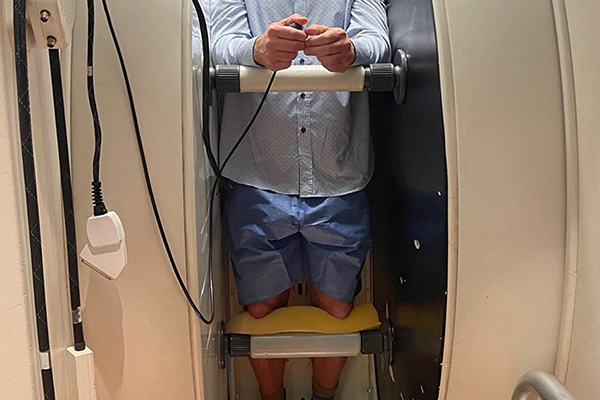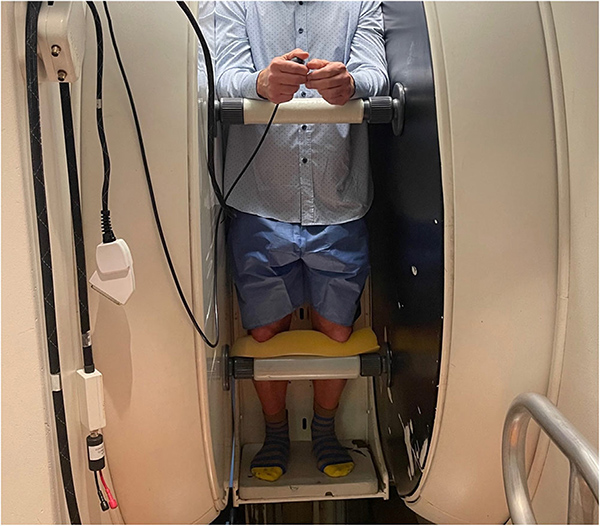A feasibility study for prostate treatments in the upright position

Treating and imaging patients in the upright orientation is gaining acceptance in radiation oncology and radiology and has distinct advantages over the recumbent position.
Former OMA fellow Michelle Lis and colleagues from Leo Cancer Care, the University of Arkansas and Fornar Corporation have conducted an IRB approved study to investigate the positions and orientations of the male pelvic organs between the supine and upright positions.
The study comprised of scanning 15 male volunteers (aged 55–75 years) on a 0.6 T Fonar MRI scanner in the supine and upright positions with a full bladder and in the upright position with an empty bladder. The pelvic study revealed that (i) in the upright position the position and shape of the prostate are not impacted significantly by bladder fill; (ii) the distance between the sacrum and the anterior bladder wall is significantly smaller; (iii) the anterior-posterior length and the bladder width is significantly larger; (iv) the seminal vesicles are pushed down by the bladder; and (v) the top of the penile bulb is further away from the apex of the prostate.

A volunteer in the MRI scanner demonstrating the upright position. Trans-polar VersaRests™ were positioned to support the knees and arms. © 2023 The Authors. Journal of Applied Clinical Medical Physics published by Wiley Periodicals, LLC on behalf of The American Association of Physicists in Medicine.
These observed differences could positively impact upright prostate treatments by reducing the risk of the small bowel approximating the treatment volume and reducing the average dose to the penile bulb.
Moreover, prostate treatments can be done with a reduced focus on bladder fill. Radiation beams for treating intermediate risk prostrate can be made smaller or a larger portion of the seminal vesicles can be treated with the same beam size than typically used for supine treatments.
The study has been published in the Journal of Applied Clinical Medical Physics.
Andries (Niek) Schreuder, Wen-Chien His, John Greenhalgh, Michael Kissick, Michelle Lis, Tracy S. A. Underwood, Harry Freeman, Michael Bauer, Stephen Towe, Rockwell Mackie, “Anatomical changes in the male pelvis between the supine and upright positions—A feasibility study for prostate treatments in the upright position”, Journal of Applied Clinical Medical Physics, e14099 (2023).
https://doi.org/10.1002/acm2.14099
* Image credit: © 2023 The Authors. Journal of Applied Clinical Medical Physics published by Wiley Periodicals, LLC on behalf of The American Association of Physicists in Medicine.